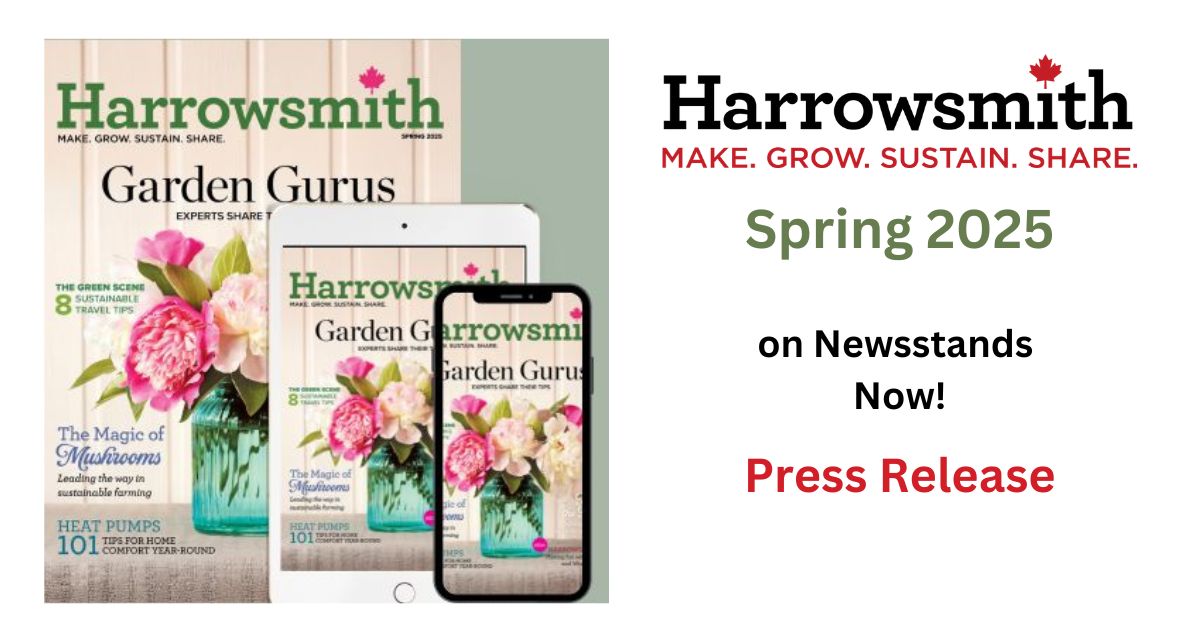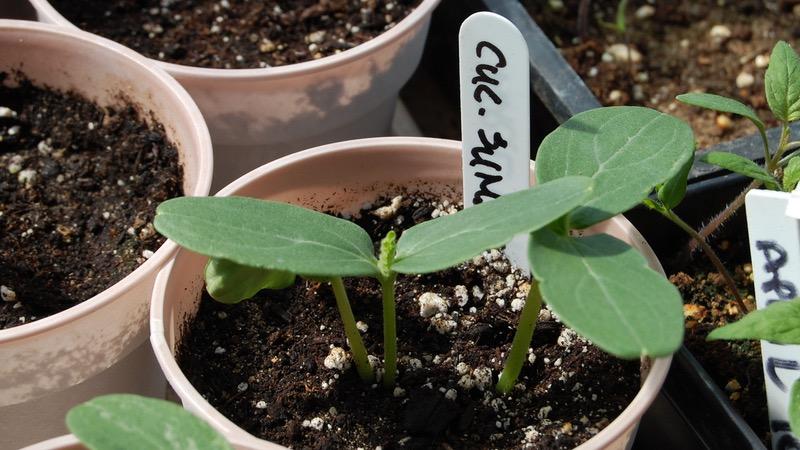As gardeners become more environmentally aware, meadows gain popularity as terrific habitats for birds and pollinators while providing an aesthetic that can flourish in wet or dry moisture conditions without inputs such as fertilizer. A well-designed meadow is beautiful, low maintenance, and ecologically superpowered. Creating a meadow planting doesn’t require a large property. Any sunny spot, such as a curbside strip or a slope, will suffice.
There is no single definition of a meadow garden. As such, no real rules, so feel free to mix native perennials with quick-growing annuals or emphasize colourful flowering perennials, with long grasses playing a secondary role. The only guideline that is important to note is that meadow gardens require
a minimum of 6 hours of sun daily, and the more, the better, especially if you choose to grow a variety
of flowering plants. Also, your success will hinge on soil preparation, plant selection and follow-up
maintenance — especially watering — more than anything. Not all trends we wish to stay, but the
garden world’s embrace of meadows is a welcome tide. Once established, you too, will convert
to this nature-rich, ever-evolving form of low-maintenance gardening.
Plan for Songbirds
Many songbirds prefer an open meadow to a woodland (or a concrete jungle). Some, including tree swallows, whippoorwills, and meadowlarks (note that name!), are endangered or at risk, so attracting them to your meadow is a good idea. A grass meadow or a flowering meadow will attract songbirds equally well. However, adding nesting boxes is essential to encourage them to stay a few weeks this summer versus just passing through for a day or two. Birds Canada is an excellent source for more details and plans for nesting boxes for each species you wish to attract.

Many birds will be attracted to the beneficial insects that inhabit your meadow garden, and the wide-open spaces lend themselves to the sky-born foraging of tree and barn swallows.
Plan Spaces to Walk, Sit and Slow Down
Creating space in your meadow that encourages contemplation requires some planning. Think about how to cut paths through your meadow that meander, rather than straight lines, where the visitor can see clearly where the path leads. The mystery of curved paths makes the space feel larger and tempts visitors to explore your meadow more deeply. Even you, the gardener, will be more tempted to walk down a path where the life that lurks behind every corner may be a surprise.

Be sure to place a bench or chair along the way. A place to sit is a great way to encourage visitors to slow down, take in a view or simply observe a favourite plant. The idea of sitting is foreign to most gardeners: we encourage you to be purposeful in this regard and sit more this season while in your garden. Nature will reveal activity to you while sitting quietly, often missed in the hurly-burly of garden activity.
The best way to create pathways through a meadow is by mowing, which allows you to follow natural contours and leaves a soft boundary between the human pathways and the naturalized meadow. Most perennial meadow seed mixes will include a hardy grass, providing a green carpet wherever you
decide to take your meadow.
Know That Size Doesn’t Matter
There are no rules governing the size of a meadow. You can create a meadow themed planter box that combines grasses and wildflowers up to many acres of managed meadow. Small meadows in urban spaces can provide valuable resting and feeding sights for migrating wildlife, while larger meadow plantings in suburbs and rural areas become semi-permanent habitats and breeding grounds. Both are equally important.
There are plenty of words to describe things like meadows, but they typically refer to something else. “Grass” is a monoculture like a lawn unless referring to a “grassland meadow.” “Fields” are generally parcels of agricultural land, and “pastures” are fields where farm animals graze. A meadow is something special that can be natural or managed and contains a special diversity of plant types, both grasses and flowering.
Grow Flowers for Cutting
Flowers that are suitable for cutting to bring indoors have two things in common: first, flowers are born on long stems that sit nicely in a vase, and second, once cut, the flowers continue to perform for at least five days in water. Surprisingly, not all beautiful garden flowers are suitable for indoor use. Anyone who has cut a daylily and brought it indoors knows this. Still, others need some special care. Poppies are not good cut flowers, except when the cut end of the flower stem is singed with a match or open flame.

Some of our favourite cut flowers include:
- Cardinal flower (Lobelia cardinalis). Perennial salvia is one of the best hummingbird plants out there. It loves the sun and makes a great cut flower. Could you ask for more? Not a wide range of colours; mostly red.
- Black-eyed Susan (Rudbeckia). If you are looking for yellow flowers that stand tall on reliably winter-hardy perennial plants, this one is for you. Look for ‘Goldstrum’, for up to 10 weeks of blooms. Not bad for a perennial!
- Asters. For great blues and bright whites, you cannot beat asters for what I call “plugged-in colour.” You would think that these plants were somehow electrified to produce such vibrancy. The long stems of the tall-growing varieties are great in the middle of an arrangement.
- Bee balm (Monarda). A well-known, native plant that attracts bees, naturally, bee balm also cuts and holds its petals well in a vase of water indoors. Look for hybrids that offer a range of pink, red and white varieties. This plant will spread in the garden, so be prepared to dig and divide it every few years.
All cut flowers perform best when cut either early in the morning or in the evening, within an hour of dusk. Avoid cutting in the heat of the day.
Welcome Beneficial Insects and Pollinating Insects
There are many insects that you will want to attract to your meadow, and not all of them are pollinators.
Some have been considered pests in the past, but now we view their presence in the garden as helpful.
Aphids, for example, were considered one of the “enemies” a generation ago to be killed or discouraged
by any means. Now, aphids are widely recognized as an important part of nature’s web, as they are an
important food source for some songbirds. Lady bugs, soft-winged flower beetles, and soldier beetles feed on
aphids. If you remove the aphids, you will discourage the beneficial insects from your garden. It is a circle
of interdependence a responsible gardener does not want to break.

Attracting native bees, butterflies, and hummingbirds requires planning a meadow with flowering plants that
support them. There are many nectar and pollen-rich flowering plants, and some top choices include Boneset
(Eupatorium perfoliatum), Hyssop (Agastache), Bee balm (Monarda), Bearded tongue (Penstemon), Asters,
Columbine (Aquilegia) and milkweeds (Asclepias).
Keep reading for many more that we mention below.
Creating a sequence of flowering plants in your meadow is easy. That is, it’s easy to say, but it requires
careful planning. Make a list of the flowering plants that you love, then organize them according to flowering
times. The second list will reveal gaps in the season that you can fill with a little research. Between the
perennial phlox of late April and the lilacs of late May, for example, there are many other plants that bloom
when the ground phlox is out of bloom, and the lilacs break bud. A good nursery catalogue that lists plants
according to flower time will help.

Choose Between Annual vs. Perennial Meadows
Meadow gardens can be loosely divided into annual and perennial meadows, with many gardeners blending annuals into their perennial meadows.
Annual meadows, which Mark prefers, establish quickly and provide plenty of colour in their first year. While you might get some naturalized reseeding, Mark’s top annual flower picks generally require replanting each spring.
How to Create a Meadow with Annuals
Perennial meadows reward the patient gardener, often taking up to three years to establish. Perennial meadows offer more ecological value by allowing the soil to remain undisturbed, sequestering more carbon and allowing more animal species to make a habitat. They can also incorporate more native plants, benefiting our native pollinators and bird species. Ben likes maintaining a perennial meadow on his rural property, attracting a raucous soundtrack of birds chirping and insects buzzing over the last few years.
Building and Maintaining a Perennial Meadow
Mark Cullen is an expert gardener, author, broadcaster and tree advocate
and holds the Order of Canada. His son, Ben, is a fourth-generation
urban gardener and a graduate of the University of Guelph and Dalhousie
University in Halifax. Follow them at markcullen.com, @MarkCullen4
(Twitter) and @markcullengardening (Facebook) and look for their latest book, Escape to Reality.
Follow them at markcullen.com, @MarkCullen4, facebook.com/markcullengardening and biweekly on Global TV’s national morning show, The Morning Show.













